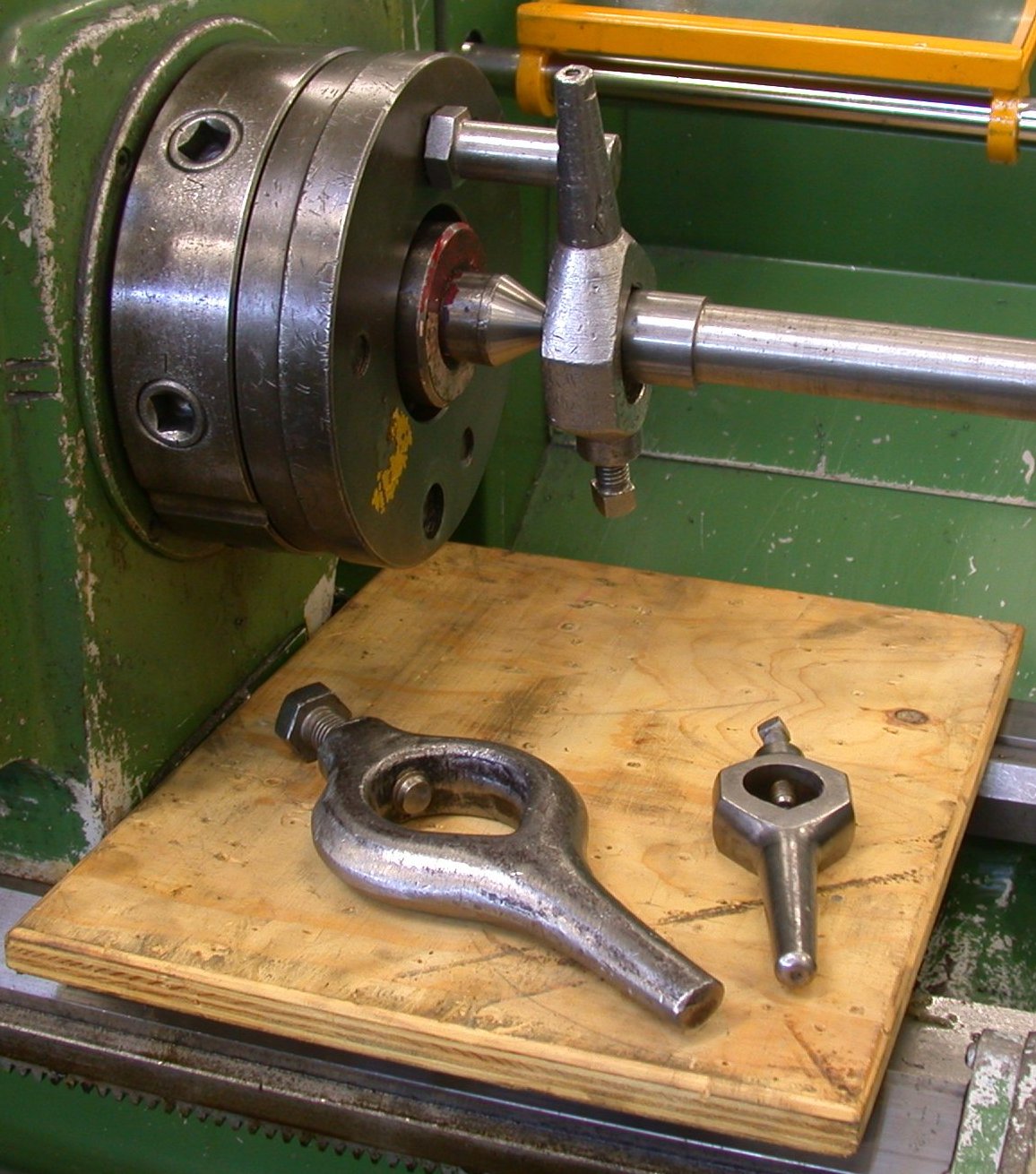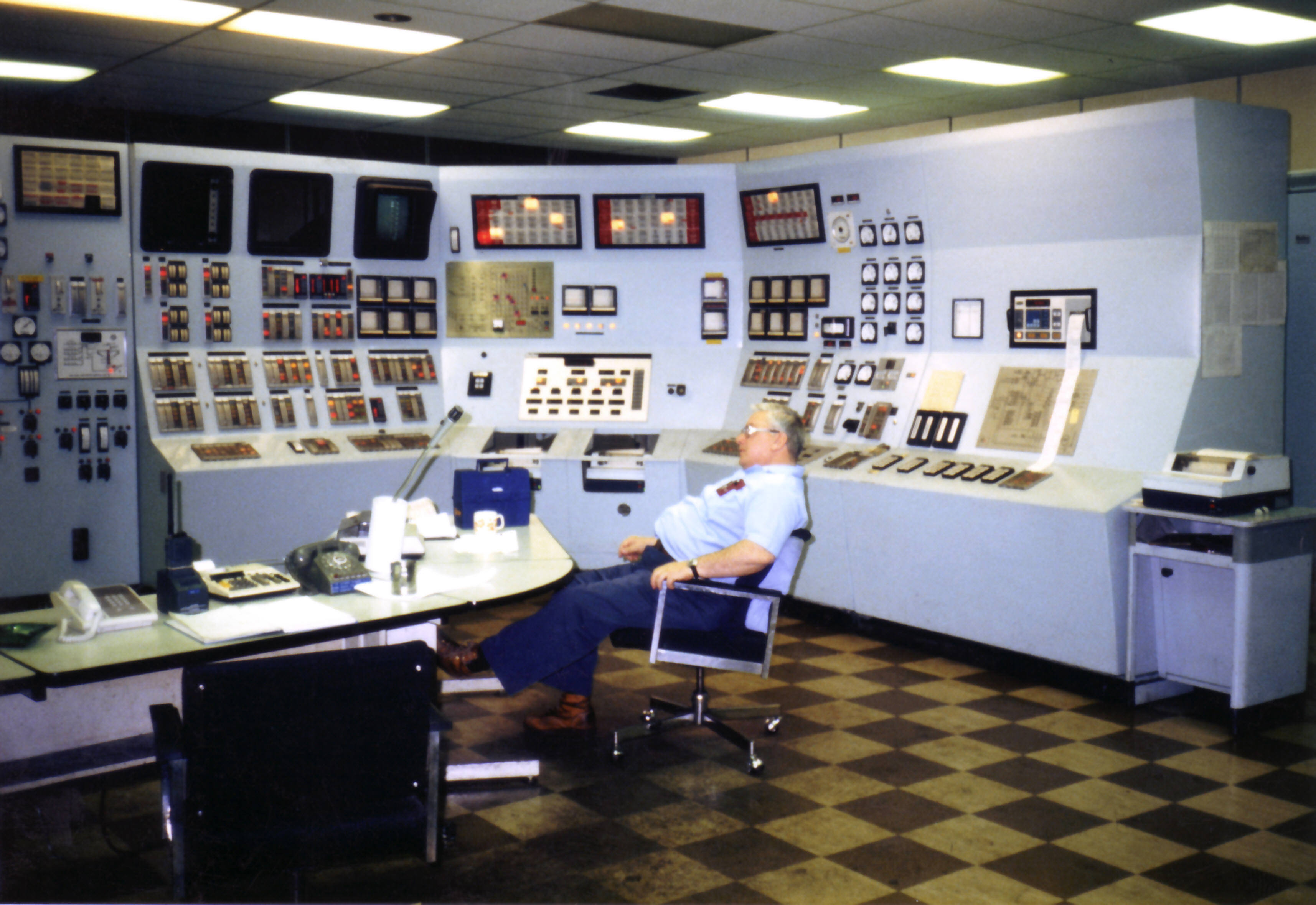|
Fay Automatic Lathe
The Fay automatic lathe was an automatic lathe tailored to cutting workpieces that were mounted on Lathe center, centers (tools with pointed ends to accurately position a Drill bit#Center and spotting drill bit, center-drilled workpiece about an axis, either directly or by using a mandrel). It could also do chucking work. (feeding of unformed blanks or pieces of stock from a magazine to be automatically gripped by the machine for turning). Examples of workpieces included automotive steering knuckles and transmission gears, and such work done on mandrels as flanges, disks, and hubs. The machine tool was developed by F.C. Fay of Philadelphia and improved by Otto A. Schaum. It was originally manufactured by the Fay & Scott Machine Shop. James Hartness acquired manufacturing rights on behalf of the Jones & Lamson Machine Company. and manufactured an improved version, developed under the management of Ralph Flanders.. In 1937 Roe, writing for the American Society of Mechanical Engineer ... [...More Info...] [...Related Items...] OR: [Wikipedia] [Google] [Baidu] |
Automatic Lathe
In metalworking and woodworking, an automatic lathe is a lathe with an automation, automatically controlled cutting process. Automatic lathes were first developed in the 1870s and were mechanically controlled. From the advent of NC and CNC in the 1950s, the term automatic lathe has generally been used for only mechanically controlled lathes, although some manufacturers (e.g., DMG Mori and Tsugami) market Swiss-type CNC lathes as 'automatic'. CNC has not yet entirely displaced mechanically automated lathes, as although no longer in production, many mechanically automated lathes remain in service. General nomenclature The term "automatic lathe" is still often used in manufacturing in its earlier sense, referring to automated lathes of non-numerical control, CNC types. The first automatic lathes were mechanically automated and controlled by Cam (mechanism), cams or tracers and pantographs. Thus, before electronic automation via numerical control, the "automatic" in the term "auto ... [...More Info...] [...Related Items...] OR: [Wikipedia] [Google] [Baidu] |
Lathe Center
A lathe center, often shortened to center, is a tool that has been ground to a point to accurately position a workpiece on an axis. They usually have an included angle of 60°, but in heavy machining situations an angle of 75° is used. The primary use of a center is to ensure concentric work is produced; this allows the workpiece to be transferred between machining (or inspection) operations without any loss of accuracy. A part may be ''turned'' in a lathe, sent off for hardening and tempering and then ground ''between centers'' in a cylindrical grinder. The preservation of concentricity between the turning and grinding operations is crucial for quality work. When turning between centers, a steady rest can be used to support longer workpieces where the cutting forces would deflect the work excessively, reducing the finish and accuracy of the workpiece, or creating a hazardous situation. A lathe center has applications anywhere that a ''centered'' workpiece may be used; this i ... [...More Info...] [...Related Items...] OR: [Wikipedia] [Google] [Baidu] |
Drill Bit
A drill bit is a cutting tool used in a drill to remove material to create holes, almost always of circular cross-section. Drill bits come in many sizes and shapes and can create different kinds of holes in many different materials. In order to create holes drill bits are usually attached to a drill, which powers them to cut through the workpiece, typically by rotation. The drill will grasp the upper end of a bit called the ''shank'' in the chuck. Drills come in standardized drill bit sizes. A comprehensive drill bit and tap size chart lists metric and imperial sized drills alongside the required screw tap sizes. There are also certain specialized drill bits that can create holes with a non-circular cross-section. Characteristics Drill geometry has several characteristics: * The spiral (or rate of twist) in the drill bit controls the rate of chip removal. A fast spiral (high twist rate or "compact flute") drill bit is used in high feed rate applications under low ... [...More Info...] [...Related Items...] OR: [Wikipedia] [Google] [Baidu] |
Mandrel
A mandrel, mandril, or arbor is a tapered tool against which material can be forged, pressed, stretched or shaped (e.g., a ring mandrel - also called a triblet - used by jewellers to increase the diameter of a wedding ring), or a flanged or tapered or threaded bar that grips a workpiece to be machined in a lathe. A flanged mandrel is a parallel bar of a specific diameter with an integral flange towards one end, and threaded at the opposite end. Work is gripped between the flange and a nut on the thread. A tapered mandrel (often called a plain mandrel) has a taper of approximately 0.005 inches per foot and is designed to hold work by being driven into an accurate hole on the work, gripping the work by friction. A threaded mandrel may have a male or female thread, and work which has an opposing thread is screwed onto the mandrel. On a lathe, mandrels are commonly mounted between centres and driven by a lathe dog (typically flanged or tapered mandrels), but may also be gripped in ... [...More Info...] [...Related Items...] OR: [Wikipedia] [Google] [Baidu] |
Philadelphia
Philadelphia ( ), colloquially referred to as Philly, is the List of municipalities in Pennsylvania, most populous city in the U.S. state of Pennsylvania and the List of United States cities by population, sixth-most populous city in the United States, with a population of 1,603,797 in the 2020 United States census, 2020 census. The city is the urban core of the Philadelphia metropolitan area (sometimes called the Delaware Valley), the nation's Metropolitan statistical area, seventh-largest metropolitan area and ninth-largest combined statistical area with 6.245 million residents and 7.379 million residents, respectively. Philadelphia was founded in 1682 by William Penn, an English Americans, English Quakers, Quaker and advocate of Freedom of religion, religious freedom, and served as the capital of the Colonial history of the United States, colonial era Province of Pennsylvania. It then played a historic and vital role during the American Revolution and American Revolutionary ... [...More Info...] [...Related Items...] OR: [Wikipedia] [Google] [Baidu] |
James Hartness
James Hartness (September 3, 1861 – February 2, 1934) was an American business executive, inventor, mechanical engineer, entrepreneur, amateur astronomer, and politician who served as the List of Governors of Vermont, 58th governor of Vermont from 1921 to 1923. Early life and education Hartness was born in Schenectady, New York, one of three sons of John William Hartness and Ursilla (Jackson) Hartness. His family moved to Cleveland, Ohio, in 1863, where his father worked as a foreman in the city's machine shops. Hartness was educated in the public schools of Cleveland until he was 16, when he became an apprentice machinist. Career Hartness worked up through the ranks in machine shops in Connecticut before moving to Springfield, Vermont. He became one of the nation's first aviators and became a one-term governor of the state of Vermont. In 1885, he married Lena Pond in Winsted, Connecticut. They were the parents of two daughters, Anna and Helen. (Helen Hartness Flanders), was ... [...More Info...] [...Related Items...] OR: [Wikipedia] [Google] [Baidu] |
Ralph Flanders
Ralph Edward Flanders (September 28, 1880 – February 19, 1970) was an American mechanical engineer, industrialist and politician who served as a Republican Party (United States), Republican United States Senate, U.S. Senator from the U.S. state, state of Vermont. He grew up on subsistence farms in Vermont and Rhode Island and was an apprentice machinist and draftsman before training as a mechanical engineer. He spent five years in New York City as an editor for a machine tool magazine. After moving back to Vermont, he managed and then became president of a successful machine tool company. Flanders used his experience as an industrialist to advise state and national commissions in Vermont, New England and Washington, D.C., on industrial and economic policy. He was president of the Boston Federal Reserve Bank for two years before being elected U.S. Senator from Vermont. Flanders was noted for introducing a 1954 motion in the Senate to censure Senator Joseph McCarthy. McCarthy had m ... [...More Info...] [...Related Items...] OR: [Wikipedia] [Google] [Baidu] |
American Society Of Mechanical Engineers
The American Society of Mechanical Engineers (ASME) is an American professional association that, in its own words, "promotes the art, science, and practice of multidisciplinary engineering and allied sciences around the globe" via "continuing education, training and professional development, codes and technical standard, standards, research, conferences and publications, government relations, and other forms of outreach." ASME is thus an engineering society, a standards organization, a research and development organization, an advocacy organization, a provider of training and education, and a nonprofit organization. Founded as an engineering society focused on mechanical engineering in North America, ASME is today multidisciplinary and global. ASME has over 85,000 members in more than 135 countries worldwide. ASME was founded in 1880 by Alexander Lyman Holley, Henry Rossiter Worthington, John Edison Sweet and Matthias N. Forney in response to numerous steam boiler pressure vessel ... [...More Info...] [...Related Items...] OR: [Wikipedia] [Google] [Baidu] |
Christopher Miner Spencer
Christopher Miner Spencer (June 20, 1833 – January 14, 1922) was an American inventor, from Manchester, Connecticut, who invented the Spencer repeating rifle, one of the earliest models of lever-action rifle, a steam powered "horseless carriage", and several other inventions. He developed the first fully automatic turret lathe, which in its small- to medium-sized form is also known as a screw machine. Early years Spencer worked for Samuel Colt’s factory, where he learned the arms-making trade.pp. 174–177 Civil War Although the Spencer rifle had been developed as early as 1859, it was not initially used by the Union. On August 18, 1863, Christopher Spencer walked into the White House carrying one of his rifles and a supply of cartridges. He walked past the sentries, and into Abraham Lincoln's office. After some discussion, he returned the following afternoon, when Spencer and Lincoln were joined by Edwin Stanton, Secretary of War and other officials, and the group t ... [...More Info...] [...Related Items...] OR: [Wikipedia] [Google] [Baidu] |
Turret Lathe
A turret lathe is a form of lathe (metal), metalworking lathe that is used for repetitive production of duplicate parts, which by the nature of their cutting process are usually interchangeable parts, interchangeable. It evolved from earlier lathes with the addition of the ''turret'', which is an indexing (motion), indexable toolholder that allows multiple cutting operations to be performed, each with a different Cutting tool (machining), cutting tool, in easy, rapid succession, with no need for the operator to perform set-up tasks in between (such as installing or uninstalling tools) or to control the toolpath. The latter is due to the toolpath's being controlled by the machine, either in jig (tool), jig-like fashion, via the mechanical limits placed on it by the turret's slide and stops, or via Digital electronics, digitally-directed servomechanisms for computer numerical control lathes. The name derives from the way early turrets took the general form of a flattened cylindrical ... [...More Info...] [...Related Items...] OR: [Wikipedia] [Google] [Baidu] |
Automation
Automation describes a wide range of technologies that reduce human intervention in processes, mainly by predetermining decision criteria, subprocess relationships, and related actions, as well as embodying those predeterminations in machines. Automation has been achieved by various means including Mechanical system, mechanical, hydraulic, pneumatic, electrical, electronic devices, and computers, usually in combination. Complicated systems, such as modern Factory, factories, airplanes, and ships typically use combinations of all of these techniques. The benefit of automation includes labor savings, reducing waste, savings in electricity costs, savings in material costs, and improvements to quality, accuracy, and precision. Automation includes the use of various equipment and control systems such as machinery, processes in factories, boilers, and heat-treating ovens, switching on telephone networks, steering, Stabilizer (ship), stabilization of ships, aircraft and other applic ... [...More Info...] [...Related Items...] OR: [Wikipedia] [Google] [Baidu] |









